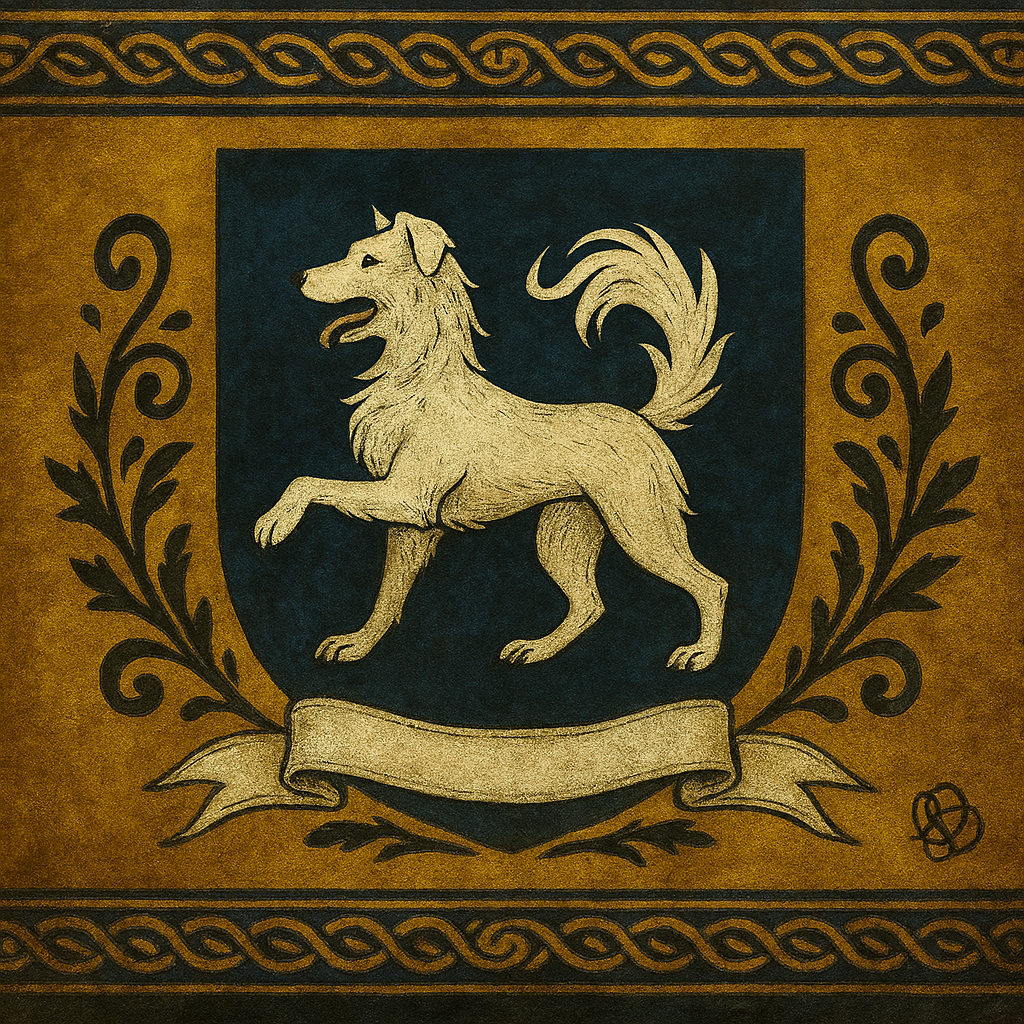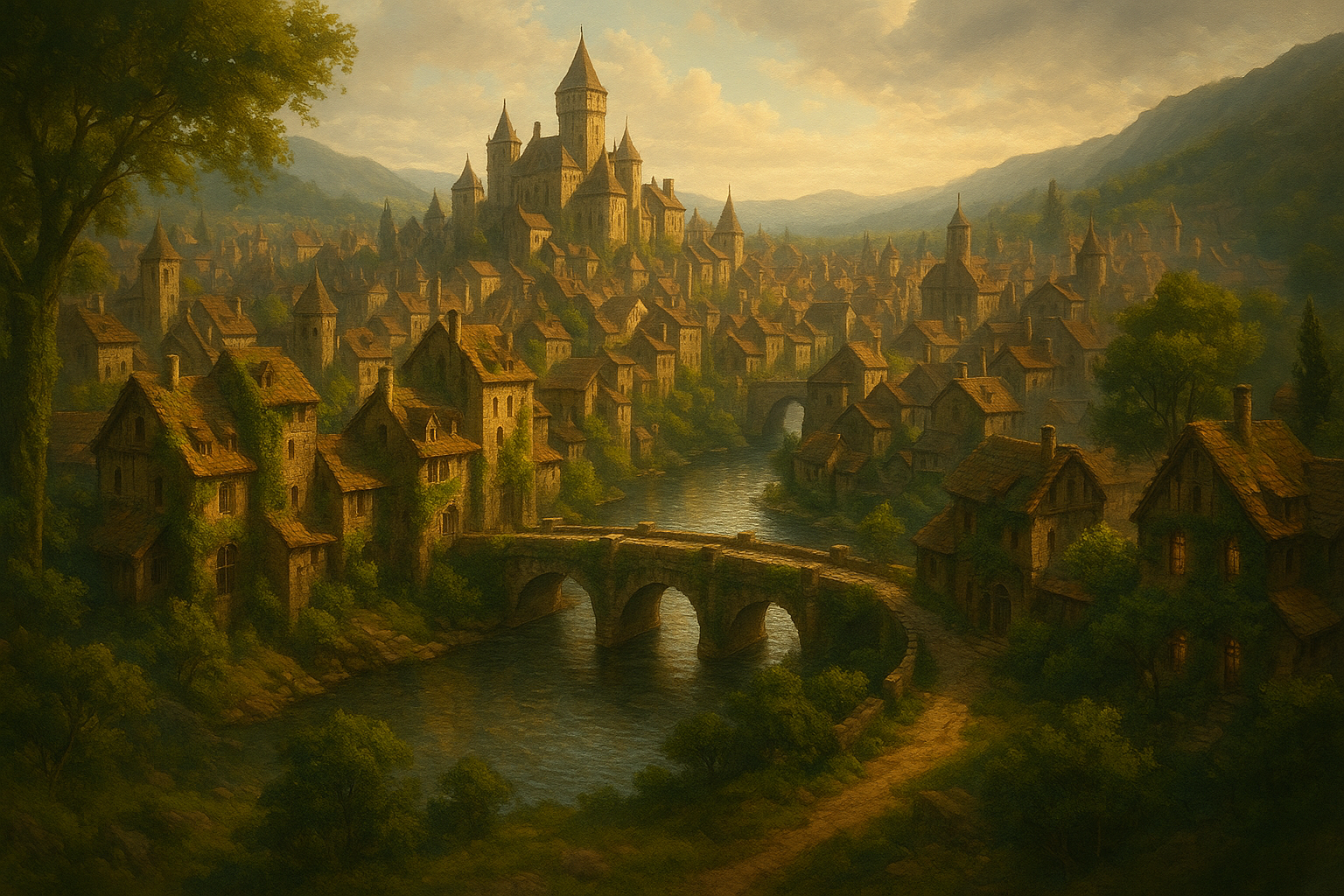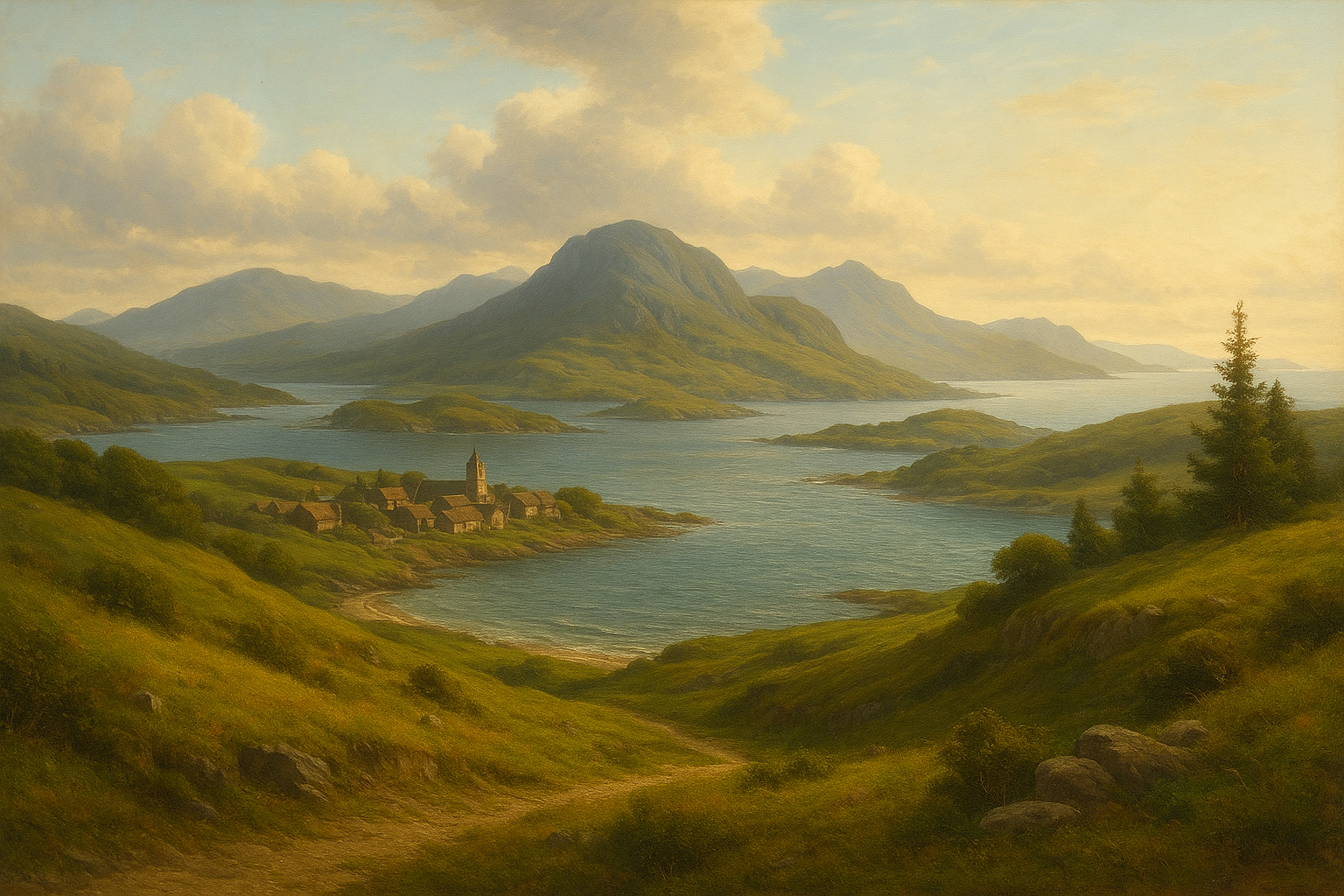The Cúraidhean Isles
The Cúraidhean Isles are a semi-autonomous island principality located off the coast of Dunmara, nestled along the Malorath Strait. Though culturally distinct and governed by their own ruling council and traditions, the Isles exist under the broader protection and influence of the Dunmaran Crown. This unique relationship allows them to handle most internal affairs, such as law, trade, and defense, while deferring to Dunmara in matters of foreign diplomacy and large-scale military action.
The Isles are led by a High Guardian, chosen through a combination of noble bloodline and popular support, with their seat in the coastal capital of Caerdarrow. Each major island maintains its own clan council, many of which are tied to ancient Lycan bloodlines. While fiercely proud of their independence, the people of the Cúraidhean Isles maintain strong cultural and economic ties to the mainland.
Their position grants them a reputation as stalwart defenders of beastfolk rights and traditions, while also serving as a buffer state between Dunmara and the more volatile southern waters.
Structure
The Cúraidhean Isles operate under a clan-based protectorate model with both internal autonomy and external allegiance. While they govern themselves through traditional systems rooted in kinship and leadership merit, they acknowledge and pay tribute to the High Council of Dunmara in matters of broader diplomacy, war, and maritime regulation.
- High Alpha (Ri Cúraidhe): A respected leader elected by consensus of the clan chieftains. Serves as the voice of the Isles in foreign affairs and ceremonial matters. Typically a Cúraidhe elder known for wisdom, loyalty, and service.
- Council of Clans: Composed of chieftains and representatives from each major island or territory. This council oversees governance, resolves disputes, and directs shared infrastructure and defense. Votes are equal among clans, regardless of size.
- Wardens: Appointed by each clan to manage local affairs such as trade, agriculture, or coastal defense. Wardens serve at the pleasure of their chieftain, though popular support matters heavily in keeping their post.
- Speaker to Dunmara: A diplomatic liaison stationed in Dunmara’s capital who communicates the Isles’ needs, fulfills tribute obligations, and ensures the Isles retain influence in regional decisions.
Culture
The Cúraidhean Isles embrace a culture shaped by survival, loyalty, and deep connection to both land and legacy. Descended from Lycans who gradually evolved into the Cúraidhe dogfolk, the people here value kinship, tradition, and resilience.
- Kin First: Family, pack, and clan form the foundation of society. Loyalty to one’s clan is sacred, but hospitality and protection of guests are equally revered. Strangers are treated with cautious courtesy until proven trustworthy.
- Oral Tradition: Storytelling is central to the Isles' cultural identity. Skalds and memory-keepers—known as Cuimhneoirí—preserve the deeds of ancestors, histories of the clans, and lessons from ancient myths. Songs, ballads, and spoken tales carry as much weight as written law.
- Nature Reverence: The Cúraidhe live in harmony with their environment. Hunting is done with ritual respect, farming with seasonal awareness, and fishing with communal effort. Every part of the land is considered sacred—from the windswept hills to the rocky shores.
- Working Hands, Proud Hearts: Practical skills like blacksmithing, weaving, shipbuilding, and fishing are celebrated. Craftsmen are as honored as warriors. Festivals often include competitions in skill, strength, and creativity.
- The Pact of Change: Transformation is seen as a sacred concept—not shapeshifting, but growth. The evolution from Lycan to Cúraidhe is a point of pride, and embracing one’s calling in life, whatever it may be, is considered a spiritual journey.
- The Hunt and the Hearth: Society balances fierceness and gentleness. Cúraidhe warriors are known for tenacity in battle, but even the most hardened soldier will kneel to listen to a child’s song or help an elder cross the road. The ideal Cúraidhe is both protector and nurturer.
History
The Cúraidhean Isles trace their roots back to the late Calamity Era, when scattered bands of Lycans fled the mainland, disillusioned with endless war and hunted for their feral natures. Seeking a life of peace and autonomy, they crossed the Malorath Strait and settled the misty, wind-lashed islands off the coast of Dunmara. These lands, though wild and unforgiving, provided sanctuary.
At first, life was difficult. The early settlers, still mostly Lycan, lived in loose, semi-nomadic clans. Over time, however, these groups became more rooted. The land demanded adaptation, and so did the growing need for structure, agriculture, and mutual defense. As generations passed, the Lycans who had once howled beneath the moon gradually became the Cúraidhe, smaller, more diverse, and more civilized, yet still fiercely loyal and instinct-driven. Their bodies changed to match their roles, fishermen, smiths, traders, hunters, no longer bound to the rigid wildness of the past.
During the early Harmonium Era, as Dunmara expanded its reach, the isles formally aligned with the mainland. However, the Cúraidhe retained their sovereignty in local governance, forming a protectorate rather than a full province. Their voice in Dunmaran matters is heard through a High Emissary chosen by the ruling Clannarch.
Throughout the centuries, the Cúraidhean Isles have held firm against pirates, sea raiders, and even Valorian scouts. Though small in size, their terrain, unity, and tenacity have made them an undesirable target. They are known not for vast armies, but for cunning scouts, swift couriers, and unwavering resolve.
Today, the Isles stand as a testament to resilience. Once outcasts, the Cúraidhe have carved out a place where instinct and civilization exist in harmony, a homeland that honors their wild past while embracing a thoughtful future.
Demography and Population
Despite their small size, the Cúraidhean Isles support a vibrant and tightly-knit population centered around coastal villages, inland farming communities, and a handful of fortified hill-settlements. The total population is estimated between 18,000 to 25,000, fluctuating slightly with seasonal migrations and fishing expeditions.
Primary Inhabitants
- Cúraidhe (Dogfolk): Roughly 65–70% of the population. They form the backbone of Cúraidhean society—fishermen, farmers, scouts, traders, and warriors. Though descended from Lycans, they now stand apart as a distinct people.
- Awakened Beastfolk (non-dogfolk): Around 10–15%. Includes feline, avian, and other awakened creatures who settled through trade or kinship. Many are integrated into daily life.
- Lycans (Wolves): A minority at 5–7%, typically reclusive elders, hunters, or spiritual figures. Honored but distant, they preserve fragments of the old ways.
- Dunmaran Humans and Halfbreeds: Estimated 10–15%. Traders, scribes, or emissaries from nearby Dunmara. Often bilingual and culturally blended.
Population Density & Spread
- Rural & Coastal Villages: Dotted along the shores, most hold 500–700 residents. Fishing and boat-building dominate here.
- Hill Settlements & Keeps: Larger communities with 1,000–2,000 inhabitants. These act as defense points, ritual sites, and regional seats of power.
- Migratory & Semi-Nomadic Groups: Families and traders who move seasonally for hunting, gathering, or ceremonial reasons. Often Awakened or Lycan in heritage.
Demographic Traits
- Lifespan: Most Cúraidhe live between 60–90 years. Awakened lifespans vary by species.
- Birth Rate: Steady. Fostering and communal child-rearing are cultural norms, especially for orphaned Awakened.
- Gender & Roles: Strongly egalitarian. Leadership, trade, and craft are shared regardless of gender.
- Education & Language: Children are educated communally. Most speak Curaidhean Cant, with Common and Dunmaran Trade-Tongue common among adults.

By Paw and Pact, We Endure.
Founding Date
76 HE
Type
Geopolitical, Protectorate
Alternative Names
The Houndlands, The Cúraidhean Archipelago,
Demonym
Cúraidhean (koo-RAH-yan)(The people may also colloquially refer to themselves as Kinfolk or Isleborn, especially in more rural areas.)
Ruling Organization
Government System
Tribalism
Power Structure
Dependent territory
Economic System
Mixed economy
Location
Official Languages






Comments